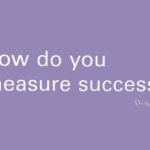Estimated reading time: 3 minutes
Like the title of today’s article says, I’d like to believe we can all agree that being able to manage change is an essential skill. The question becomes what’s the best way to do it.
I was reminded of this while listening to Foley & Lardner’s webcast on “What Do Election Outcomes Mean for the Country, Your Industry, and Your Company?”. While this webcast was broadcast immediately after election day – so some of the speculation about who will be nominated for cabinet positions has been answered – it’s still worth a listen. I found it interesting to hear where it aligned with another webcast I had listened to about 2025 and HR compliance. A couple of my takeaways from the Foley webcast include:
Stay current with government appointments. Just like in our organizations, who is selected to lead departments, committees, and projects can have a huge impact on outcomes. If you’re trying to understand the business landscape, knowing who the government has appointed to lead certain committees will be valuable. For example, the person selected to chair the National Labor Relations Board could have an impact on employee relations.
Expect a deregulation agenda. I don’t know that this is a surprise. It’s been discussed throughout the election cycle. If current laws are changed or rolled back, organizations will have some decisions to make. Will they keep doing what they’re doing – even if it’s not required? This isn’t a simple question with an obvious answer.
Which is why I wanted to talk about managing change today.
Change is always present. Some changes might be small, others large scale. Some changes could be things we’ve been hoping for and others … not so much. We don’t always have the luxury of dealing with one change at a time. You get my point. Change is hard. So having a strategy for dealing with change is essential.
Organizations could really benefit by finding a change management model that works and sharing that model throughout the company. Two well-known models include Kotter’s 8-Step Model and Lewin’s 3-Step Model. One model isn’t “better” than the other. Both are great in terms of outlining the steps to identify and implement change. The important part is to find one that works.
Once organizations have identified a model, then think about having dedicated training sessions (maybe during onboarding) to equip employees with the tools to use it. Build time into existing training programs to show employees how to use the change management model with the content they’ve just learned.
And during times like these when we know change is coming, consider offering a couple of refresher sessions about how to manage it. This could be designed as an internal podcast or webinar to remind employees about the principles for handling change.
This will help employees manage change well – in both their personal and professional lives. And this will ultimately help the organization manage change, regardless of what the future brings.
Image captured by Sharlyn Lauby while exploring the streets of Chicago, IL
The post Managing Change Is an Essential Skill appeared first on hr bartender.










